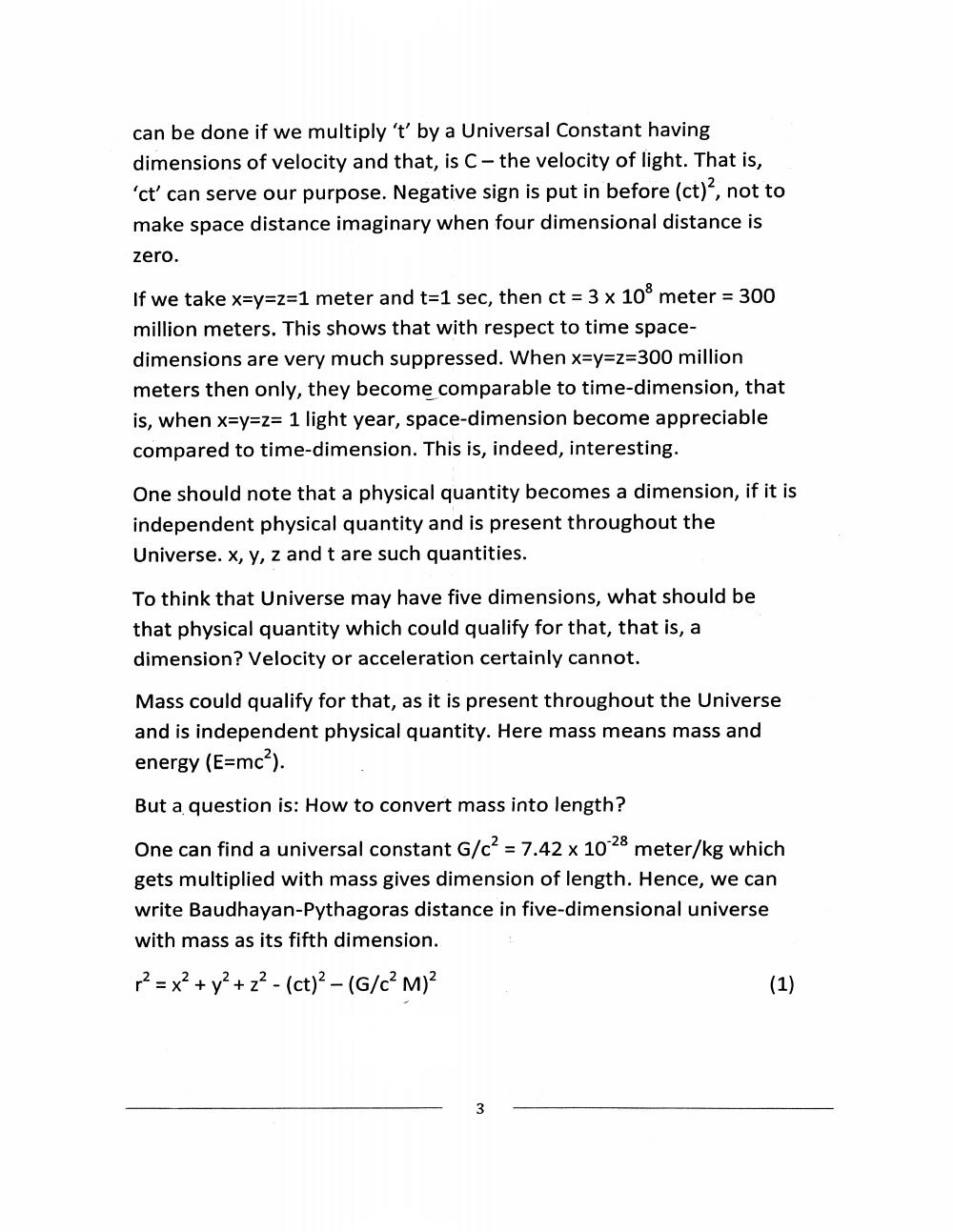Book Title: Nature of Universe Author(s): J J Rawal Publisher: J J Rawal View full book textPage 3
________________ can be done if we multiply 't' by a Universal Constant having dimensions of velocity and that, is C-the velocity of light. That is, 'ct' can serve our purpose. Negative sign is put in before (ct)?, not to make space distance imaginary when four dimensional distance is zero. If we take x=y=z=1 meter and t=1 sec, then ct = 3 x 100 meter = 300 million meters. This shows that with respect to time spacedimensions are very much suppressed. When x=y=z=300 million meters then only, they become comparable to time-dimension, that is, when x=y=z= 1 light year, space-dimension become appreciable compared to time-dimension. This is, indeed, interesting. One should note that a physical quantity becomes a dimension, if it is independent physical quantity and is present throughout the Universe. x, y, z and t are such quantities. To think that Universe may have five dimensions, what should be that physical quantity which could qualify for that, that is, a dimension? Velocity or acceleration certainly cannot. Mass could qualify for that, as it is present throughout the Universe and is independent physical quantity. Here mass means mass and energy (E=mc2). But a question is: How to convert mass into length? One can find a universal constant G/c? = 7.42 x 10-28 meter/kg which gets multiplied with mass gives dimension of length. Hence, we can write Baudhayan-Pythagoras distance in five-dimensional universe with mass as its fifth dimension. p = x2 + y2 + 2? - (ct)2 – (G/cm)2 (1)Page Navigation
1 2 3 4 5 6 7 8 9 10 11 12
